I took my hops in to the house and divided them up onto two baking sheets. My oven has a pretty convenient dehydrate feature, so I figured I’d give it a try. It basically just maintains the oven temperature at 120 degrees while running the convection fan.
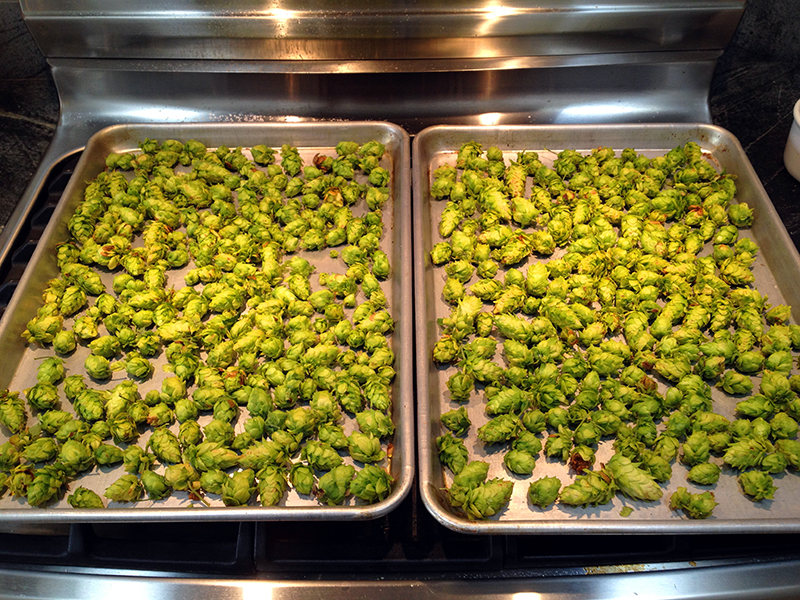
After I took this photo I slipped a couple of wire cooling racks under the cones to elevate them off the baking sheets. I figured it would improve air circulation and thus drying.
It took a couple of hours for the cones to get lighter and more crispy. During this time the house smelled so delicious.
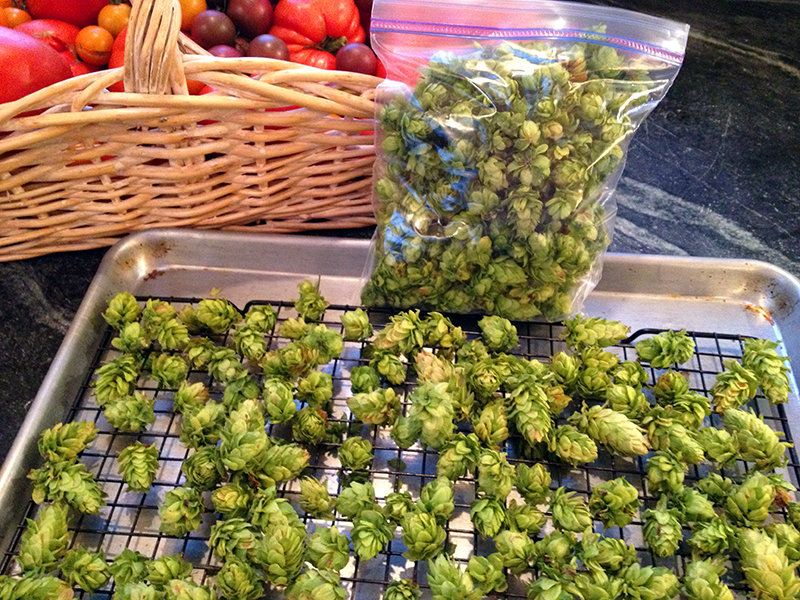
When I judged the hops dry enough, I packed them into quart zip-top bags and used the old straw trick to suck the air out around them. Then I tossed them in the freezer. I ended up with two quart bags of harvest.
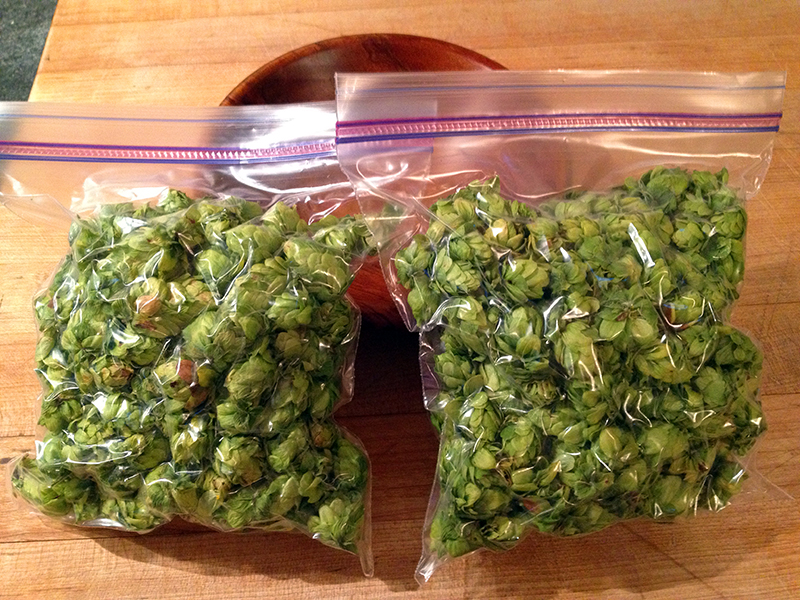
I also took a few of the hops and packed them in a glass jar with 100 proof vodka to make a tincture. Hops tincture is relaxing, soothing to the digestive system, sedative, and good for insomnia. I will let the mixture sit for six weeks and then strain out the hops and bottle the tincture. This is the first medicine I have made from home-grown material, and it feels pretty wonderful to be working with plants in this new way.
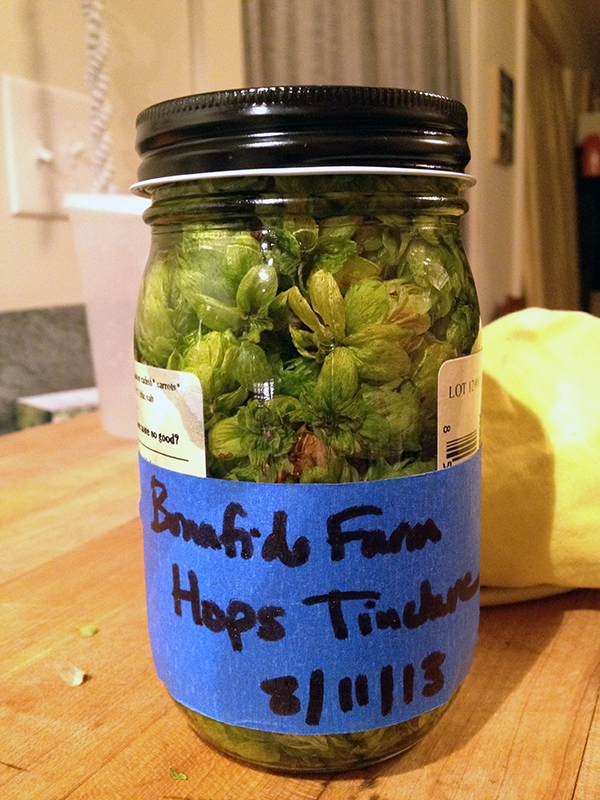
And that concludes the 2013 hops harvest. When the frost kills back the top growth on the hops plants, I will cut it off to compost and mulch the roots well. Then next year I will restring the ropes and expect an even bigger harvest if all goes well.
I found hops to be relatively maintenance free. I didn’t give them any supplemental water, thanks to our abnormally wet summer, nor did I give them any extra fertilizer. Deer left them alone. The hops did attract stink bug nymphs during the last few weeks, but the insects didn’t appear to damage the plants or the cones. I’m going to go ahead and call the first year of hops experiment a success.
I don’t have plans yet for the frozen hops. They may make their way into tea, or maybe beer. We’ll see!
You may remember I planted my first Celeste hops back in April. It was pretty simple, involving amending some soil and running a couple of ropes from the ground up the the eaves of the garage.
It took a few weeks for the hops to emerge from the soil, but once they did they steadily grew until it was time to harvest two weeks ago.
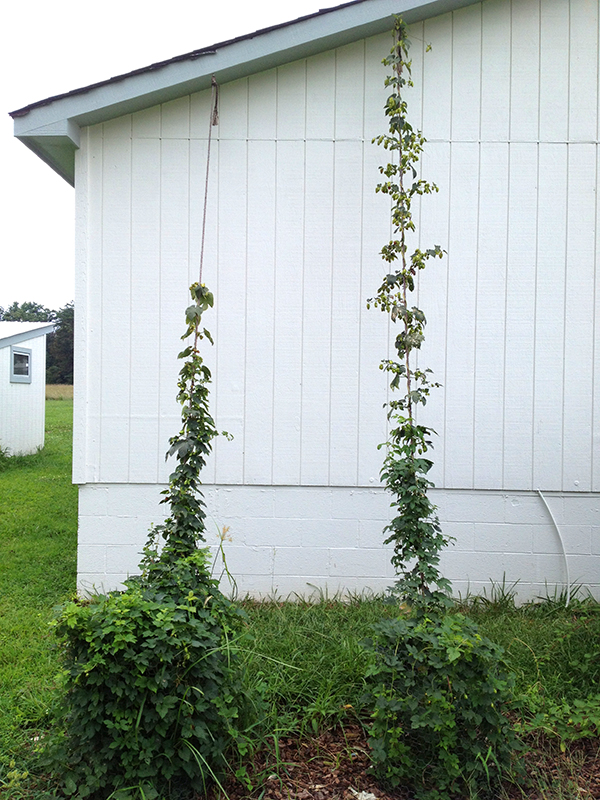
I watched a few online videos to figure out that the time was right, and even though my hops cones weren’t quite as large as some I’d seen online, other signs suggested they were ready. They felt crisp and springy to the touch, had deep golden lupulin glands within, and bits were starting to turn brown. And, I was due to leave the farm for a couple of weeks and knew that if I didn’t get them down, they’d all be ruined when I returned. So harvest time it was!
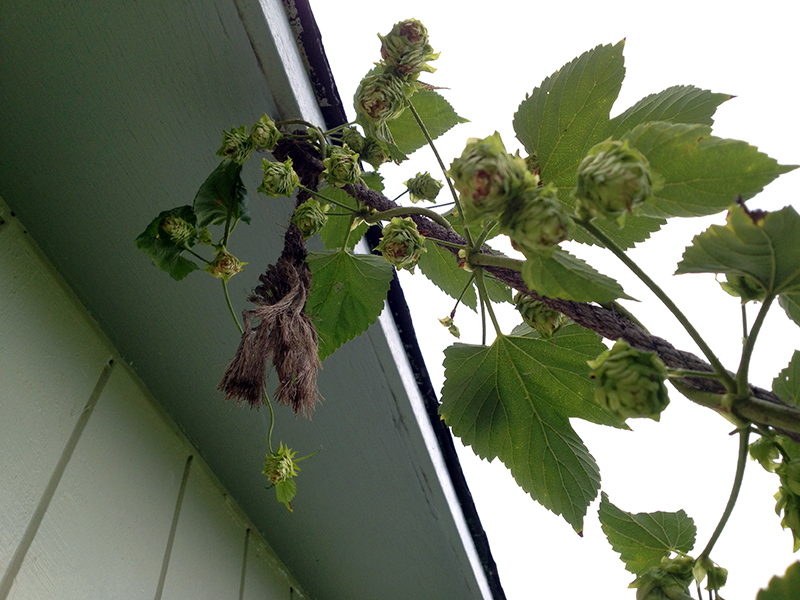
I gathered the ladder and my harvest basket and set to work cutting down the rope that held the more vigorous of the two vines.
Once I had it on the ground it was easy work to strip the cones off the plant, and they left telltale yellow resin (deliciously hop-smelling!) on my hands.
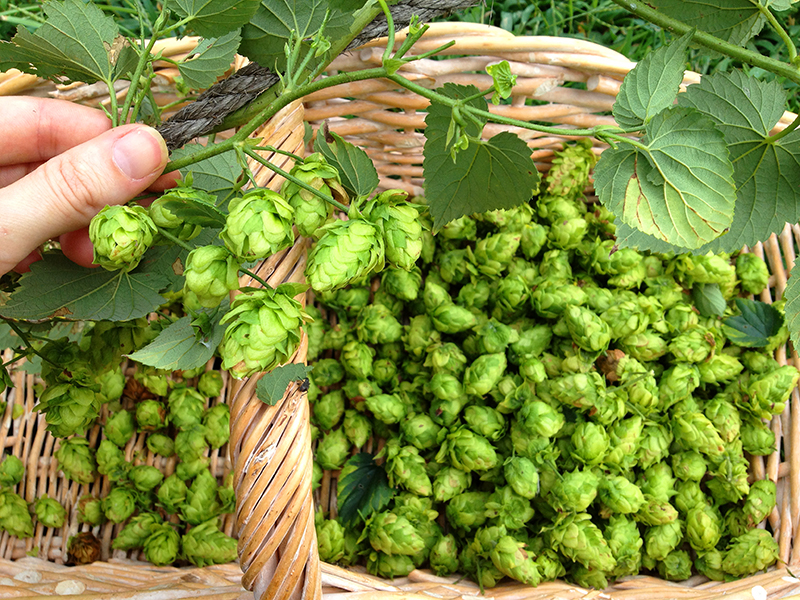
Remember that dogs will die if they ingest hops, so if you’re growing them around pets take extra care. I know my dog has pretty good judgment about what he eats, but even so I watched him closely while harvesting and I made sure to not leave any hops cones on the ground and picked up all loose leaves and plant pieces.
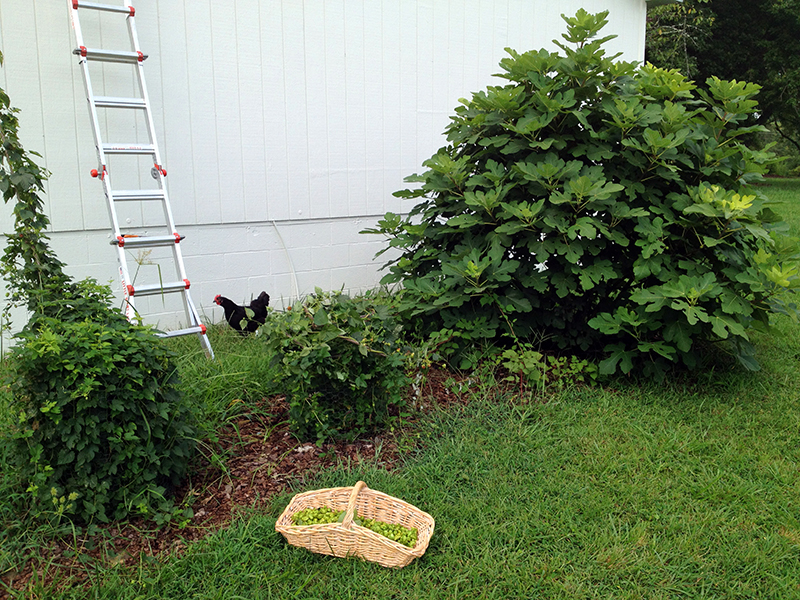
Once I had the cones picked off, I wound the bines up so that the leaves could continue photosynthesizing until frost. I figured that as the first year is really all about root development anyway, it didn’t make sense to chop the plants down yet when the leaves could still be helping the roots grow. A chicken photobombed this shot, which also nicely shows off my flourishing Celeste fig. This tree is in its third year in this location and very happy to be living on the south side of a white barn, soaking up light and heat. Soon its figs will be ready to eat.
Up next: What to do with your harvested hops.








